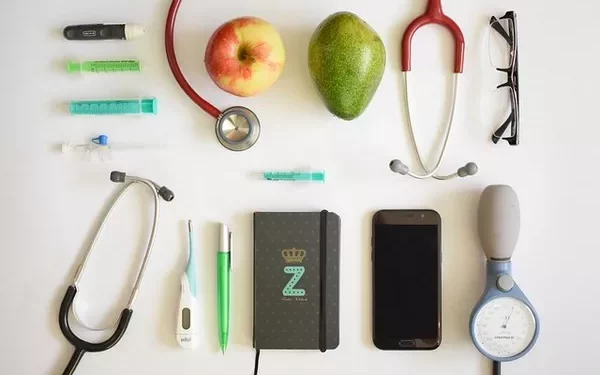Managing type 2 diabetes often requires a comprehensive approach, including lifestyle changes, oral medications, and sometimes insulin therapy. Among the various methods of insulin delivery, insulin pumps are increasingly being used as a viable option for individuals with type 2 diabetes. This article will explore what an insulin pump is, how it works, its benefits and drawbacks, and its role in the management of type 2 diabetes.
Understanding Insulin Pumps
An insulin pump is a small, computerized device that delivers insulin continuously throughout the day to help control blood glucose levels. It mimics the way a healthy pancreas releases insulin, providing a more precise and adjustable method of insulin delivery compared to traditional injections.
Components of an Insulin Pump
Pump Device: The main unit of the insulin pump contains the controls, display screen, battery, and pumping mechanism.
Reservoir: This is a cartridge or container that holds the insulin. It is inserted into the pump and typically holds enough insulin for several days.
Infusion Set: This includes a thin plastic tube (catheter) that connects the pump to a cannula, which is inserted under the skin to deliver insulin. The infusion set needs to be changed every few days.
How Insulin Pumps Work
Basal Rate: The pump delivers a continuous, small amount of insulin (basal insulin) throughout the day and night to maintain steady blood glucose levels.
Bolus Doses: At mealtimes, the user can program the pump to deliver additional insulin (bolus insulin) to cover the carbohydrates consumed and to correct high blood glucose levels.
Adjustability: The pump allows for precise adjustments of insulin delivery rates based on individual needs, physical activity, illness, or other factors affecting blood glucose levels.
Advantages of Insulin Pumps for Type 2 Diabetes
Insulin pumps offer several benefits over traditional insulin injections, which can be particularly advantageous for individuals with type 2 diabetes.
Improved Glycemic Control
Insulin pumps provide a more consistent and precise delivery of insulin, which can lead to better overall blood glucose control. This can result in fewer episodes of hyperglycemia (high blood glucose) and hypoglycemia (low blood glucose).
Flexibility and Convenience
Reduced Injections: With an insulin pump, individuals do not need to administer multiple daily injections. Instead, they replace the infusion set every few days.
Adjustable Dosages: The ability to easily adjust insulin delivery rates allows for more flexibility in managing blood glucose levels, particularly during changes in routine, exercise, or illness.
Ease of Use: Modern insulin pumps come with user-friendly interfaces and features such as bolus calculators, which help determine the correct insulin dosage based on carbohydrate intake and current blood glucose levels.
Lifestyle Benefits
Discreet: Insulin pumps are small and can be worn discreetly under clothing. This can be particularly beneficial for individuals who prefer to keep their diabetes management private.
Active Lifestyle: The pump’s ability to deliver basal insulin continuously allows for greater freedom and spontaneity in daily activities, including exercise, travel, and social events.
Data Tracking and Management
Integrated Systems: Many insulin pumps are compatible with continuous glucose monitors (CGMs), which provide real-time blood glucose data and help to fine-tune insulin delivery.
Data Logging: Insulin pumps often have built-in memory to log insulin delivery and blood glucose readings, which can be downloaded and reviewed by healthcare providers to optimize diabetes management.
Disadvantages and Challenges of Insulin Pumps
Despite their many benefits, insulin pumps also come with certain challenges and disadvantages that need to be considered.
Cost
Insulin pumps and their supplies can be expensive. While insurance may cover part of the cost, out-of-pocket expenses can still be significant. It’s essential to verify insurance coverage and consider the long-term financial implications.
Learning Curve
Initial Training: Learning to use an insulin pump effectively requires training and practice. Individuals need to understand how to operate the device, program basal and bolus rates, and troubleshoot potential issues.
Ongoing Management: Using an insulin pump requires ongoing attention to ensure proper functioning, including regular site changes, monitoring insulin levels, and managing device settings.
Technical Issues
Device Malfunctions: Although rare, insulin pumps can malfunction or fail. Users must be prepared to address issues such as blockages in the infusion set, battery failure, or software glitches.
Skin Irritation: Some individuals may experience skin irritation or infections at the infusion site, which requires careful monitoring and proper site rotation.
Psychological Impact
Dependency: Some individuals may feel a sense of dependency on the device, which can be psychologically challenging. It’s important to have support and counseling available to address these feelings.
Body Image: Wearing an insulin pump can affect body image and self-esteem, particularly if the device is visible or causes discomfort.
Who Should Consider an Insulin Pump for Type 2 Diabetes?
Insulin pumps are not suitable for everyone with type 2 diabetes. They are generally recommended for individuals who require intensive insulin therapy and have difficulty achieving optimal blood glucose control with multiple daily injections. Specific candidates for insulin pump therapy include:
Individuals with Severe Insulin Resistance
People with type 2 diabetes who require large doses of insulin may benefit from the precise and consistent delivery that an insulin pump provides. This can help to manage blood glucose levels more effectively and reduce the risk of complications.
Those with Erratic Blood Glucose Levels
Individuals who experience frequent fluctuations in blood glucose levels, despite adhering to a regimen of multiple daily injections, may find an insulin pump beneficial. The ability to fine-tune insulin delivery can help to stabilize blood glucose levels.
Active Lifestyles
For people with active and unpredictable lifestyles, an insulin pump offers greater flexibility and convenience. The pump can adjust insulin delivery to match varying levels of physical activity, making it easier to maintain stable blood glucose levels during exercise and other activities.
Difficulty with Injection Schedules
Individuals who struggle with adhering to a strict injection schedule may benefit from the continuous and adjustable insulin delivery that an insulin pump provides. This can simplify diabetes management and improve adherence to treatment plans.
Insulin Pump Therapy: Getting Started
Starting insulin pump therapy involves several steps, including evaluation, education, and ongoing support.
Evaluation and Selection
Medical Assessment: A healthcare provider will conduct a thorough assessment to determine if an insulin pump is appropriate. This includes reviewing the individual’s medical history, blood glucose control, and current treatment regimen.
Device Selection: There are several types of insulin pumps available, each with different features and capabilities. The healthcare provider will help select the most suitable pump based on the individual’s needs and preferences.
Training and Education
Initial Training: Individuals will receive comprehensive training on how to use the insulin pump, including how to insert the infusion set, program basal and bolus rates, and troubleshoot common issues.
Diet and Carbohydrate Counting: Since insulin pumps require accurate carbohydrate counting for bolus calculations, individuals may need additional training on nutrition and meal planning.
Ongoing Support
Regular Follow-ups: Regular appointments with a healthcare provider are essential to monitor progress, adjust settings, and address any issues or concerns.
Continuous Education: Ongoing education and support are crucial to ensure effective use of the insulin pump and to stay updated on new technologies and best practices.
The Role of Technology in Insulin Pump Therapy
Advancements in technology have significantly improved the functionality and convenience of insulin pumps, making them more effective tools for managing type 2 diabetes.
Continuous Glucose Monitoring (CGM) Integration
Many modern insulin pumps can integrate with continuous glucose monitors (CGMs), which provide real-time data on blood glucose levels. This integration allows for more precise insulin delivery and better overall glucose control.
Automated Insulin Delivery (AID) Systems
Automated insulin delivery (AID) systems, also known as closed-loop systems or artificial pancreas systems, combine insulin pumps with CGMs and advanced algorithms to automate insulin delivery. These systems can predict blood glucose trends and adjust insulin delivery accordingly, reducing the burden on the user and improving glycemic control.
Mobile Apps and Remote Monitoring
Mobile apps and remote monitoring capabilities allow individuals to track their insulin pump data, blood glucose levels, and other health metrics on their smartphones. This technology enables better communication with healthcare providers and more informed decision-making.
Future Directions in Insulin Pump Therapy for Type 2 Diabetes
Research and development in insulin pump technology continue to advance, with several promising innovations on the horizon.
Improved Sensors and Algorithms
The development of more accurate and reliable glucose sensors, along with advanced algorithms, will enhance the performance of automated insulin delivery systems, making them more effective and user-friendly.
Personalized Medicine
Future insulin pumps may incorporate personalized medicine approaches, using genetic, metabolic, and lifestyle data to tailor insulin delivery more precisely to the individual’s unique needs.
Enhanced User Experience
Ongoing improvements in design, usability, and comfort will make insulin pumps more appealing and accessible to a broader range of individuals with type 2 diabetes.
See also: What’s the First Symptoms of Type 2 Diabetes
Conclusion
Insulin pumps offer a valuable tool for managing type 2 diabetes, providing precise and adjustable insulin delivery that can improve glycemic control and enhance quality of life. While they come with certain challenges and costs, the benefits of improved blood glucose management, flexibility, and convenience make them an important option for many individuals.
For those considering insulin pump therapy, it is essential to work closely with a healthcare provider to evaluate the suitability of this treatment, receive proper training, and ensure ongoing support. As technology continues to advance, insulin pumps will likely become even more effective and accessible, offering new opportunities for better diabetes management.
Related topics:

























